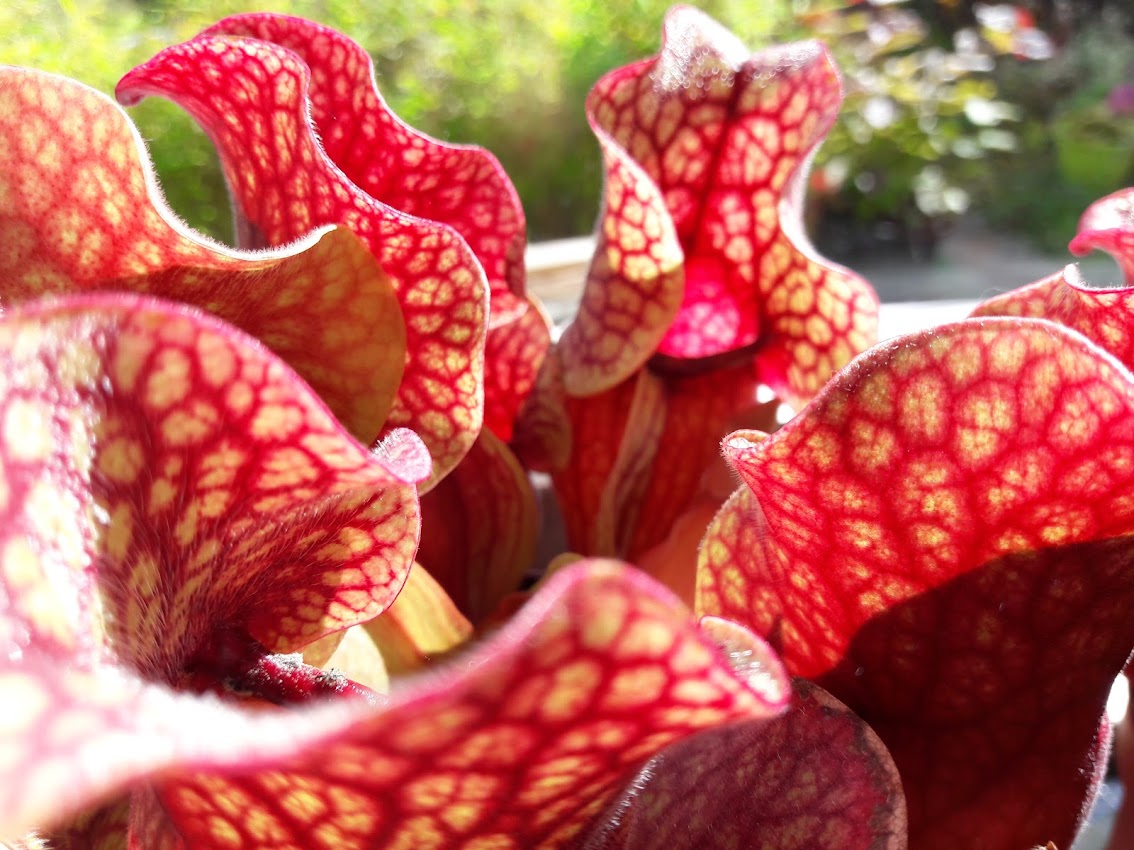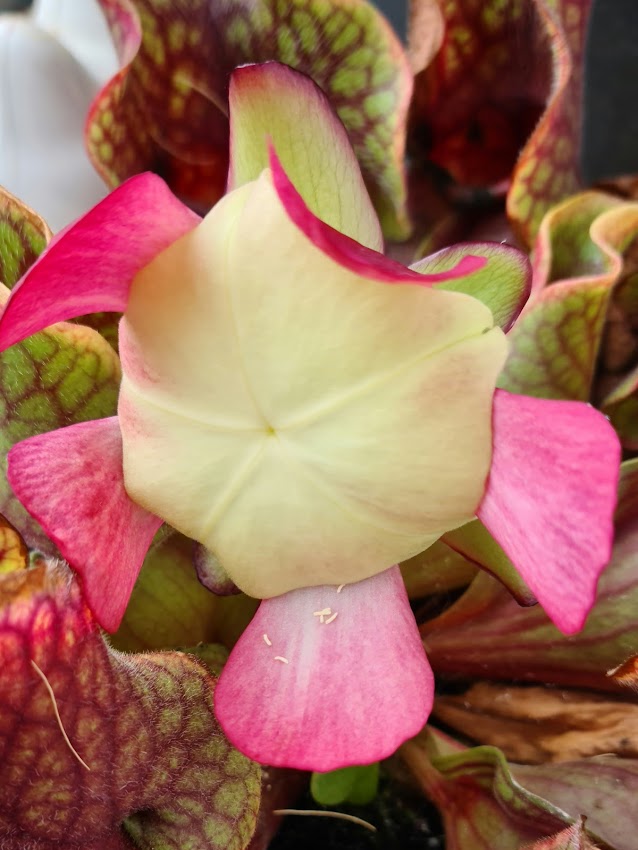

Sarracenia purpurea var. venosa
General
Sarracenia purpurea var. venosa, commonly known as the Southern Purple Pitcher Plant, is a fascinating North American carnivorous plant. With its distinctive, robust pitchers and adaptive lifestyle, it thrills both collectors and ecologists. Renowned for its resilience in variable climates, this species is ideal for beginners and seasoned growers alike.
Physical Characteristics
This species boasts squat, wide-bodied pitchers (modified leaves) that are typically 10–30 cm (4–12 in) tall. The pitchers have a bulbous, ribbed shape with distinctly ruffled hoods and are marked by a network of dark red veins, especially in good light. The outer surface feels somewhat leathery due to a thicker cuticle, distinguishing it from the thinner and glossier typical form, Sarracenia purpurea var. purpurea. Early in the season, it produces striking, nodding purple-maroon flowers on long stalks.
Lifestyle
A true carnivore, this plant lures, traps, and digests insects to supplement its nutrition. Unlike many other pitcher plants, it relies on rainwater to fill its pitchers, with digestion aided by captured insect prey and a micro-ecosystem of bacteria and aquatic invertebrates that develop inside the pitchers.
Habitat and Protection
Native to the southeastern United States, this variety thrives in nutrient-poor, acidic wetlands such as bogs and wet savannas. Its leathery pitchers help prevent desiccation in drier or warmer regions. Conservation efforts are crucial as habitat loss threatens wild populations. Always source your plant from responsible, ethical growers.
Cultivation
Cultivating this pitcher plant in a garden bog, outdoor container, or greenhouse is straightforward if mimicking its natural conditions. Choose a spacious pot or bog garden, ensuring proper drainage and acidic, nutrient-poor substrate. Outdoor cultivation is possible across much of its range, but winter protection might be needed in colder climates.
Special Features
- Showy, veined pitchers that retain their color well
- Tolerance to a range of temperatures, including frost
- Attractive, long-lasting flowers early in the growing season
- Provides habitat for unique pitcher-dwelling organisms
Care
Light
Bright light is key: full sun for at least 6 hours daily brings out the deepest color and ensures robust growth. In shadier spots, pitchers may become green and floppy.
Temperature
Thrives in mild to warm temperatures during the growing season (15–30°C / 59–86°F). It can tolerate brief cold snaps down to -10°C (14°F) when dormant, especially if mulched or protected.
Water
Use only soft water—rainwater, distilled, or demineralized. The soil must always be damp but not waterlogged. Never let pots dry out. Set the pot in a shallow tray of water during active growth.
Soil
The ideal mix is 1:1 sphagnum peat moss and perlite or silica sand. Avoid fertilizers, composts, or rich potting soils, as these will burn the roots.
Nutrition
The plant obtains nutrients mostly from captured insects and the ecosystem in its pitchers. There’s no need for additional feeding; never use standard fertilizers.
Humidity
Prefers moderate to high humidity (50–80%), but the variety’s robust pitchers tolerate relatively drier air. Avoid consistently arid indoor locations.
Dormancy
A winter dormancy period is essential for long-term health. In late fall, allow the plant to experience cooler, shorter days. Reduce watering, and remove dead pitchers in spring before the new growth emerges.
Common Problems
Mushy pitchers or root rot
Cause: Constant waterlogging or poor drainage.
Solution: Improve drainage, use a suitable soil mix, and avoid constantly standing water outside of the growing season.
Pitchers turn green and floppy
Cause: Insufficient sunlight.
Solution: Move to a location with more direct sunlight.
Brown, crispy leaf edges
Cause: Hard tap water or excessive mineral content.
Solution: Always water with rainwater, distilled, or deionized water.
No new pitchers growing in spring
Cause: Insufficient winter dormancy or lack of light.
Solution: Ensure cool winter rest and provide brighter light in the growing season.
Insect infestations (e.g., aphids)
Cause: Stressed plants are more susceptible to pests.
Solution: Remove pests manually or use a gentle insecticidal soap, avoiding any chemical residues in the soil or pitchers.
If you get the cultivation basics right, this resilient beauty will reward you with year after year of remarkable growth and fascinating carnivorous activity.
